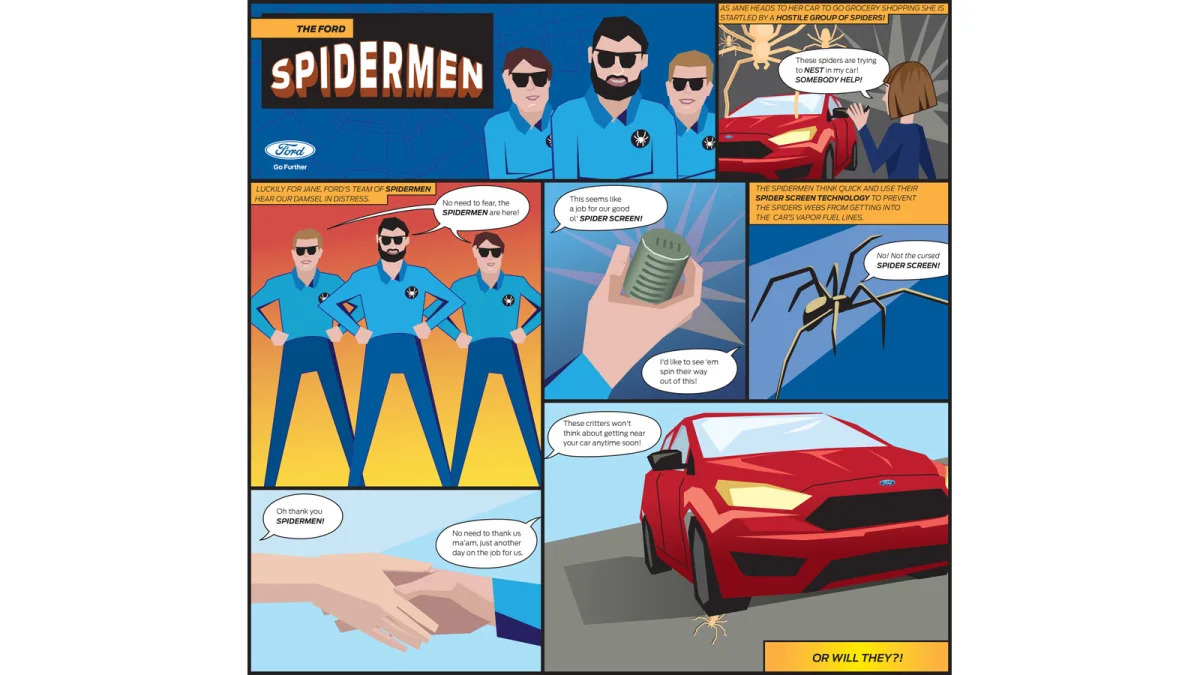Ford Spider Shield

-

- Image Credit: Ford
Ford's Spidermen
Cheiracanthium mildei and Cheiracanthium inclusum – more commonly referred to as yellow sac spiders – can be a big problem, even if you're not afraid of spiders.
These arachnids have been known to nest inside vehicles in North America, causing problems for car owners and automakers alike over the years. Instead of using webs to catch prey, these spiders build cocoon-like webs for shelter and to lay eggs. Their home is dense enough to potentially block fuel vapor lines, which can lead to engine damage and diminished vehicle performance.
Spiders have been responsible for the recalls of hundreds thousands of vehicles in the US over the years. Mazda issued two campaigns on the Mazda6 due to the webs causing pressure to build up in the fuel tank and potentially leading to a split. There was also a similar recall from Suzuki, and another one covering the air conditioning system on Toyotas.
And that's why Ford created a team of Spidermen.
-
- Image Credit: Ford
Ford's spider shield
David Gimby, Ford fuel systems engineer, began looking into how to keep spiders out of Ford vehicles back in 1999. Having no background in arachnology, he researched the life and science of spiders and in 2004 Ford produced its first spider screen, which has kept spiders from nesting inside Ford vehicles for years. -
- Image Credit: Ford
Yellow Sac Spider and Ford's screen
"These particular Arachnids are not sedentary – they are hunters and constantly roaming," Gimby explained. "When it's time to build a birthing cocoon or an over-winter cocoon, they seek a cavity or a depression, like a fuel vapor line opening, which allows them to maximize the use of their silk."
"Spiders can be a nuisance for our vehicle owners," said Gimby. "We studied these species to discern how they nest, then designed an effective device for excluding the larger, problematic spiders from nesting in our cars." -
- Image Credit: Ford
Yellow Sac Spider
The technology continues to evolve. Ford engineers worked on an improved spider screen that is being implemented across the Ford lineup in North America. It will go global with the launch of the all-new 2016 Ford Focus RS.
Keeping fuel vapor lines clear is key to air and vapor circulation for a vehicle's carbon canister, where fuel vapors are captured so they don't enter the environment. The Ford-developed spider screen keeps spiders out of the line, but allows air and vapor flow for optimal vehicle operation.Warning: If you really hate spiders, you might not want to click over to the next slide.
-
- Image Credit: Letwane/Flickr
Cheiracanthium Mildei
Cheiracanthium are usually pale in colour, and have an abdomen that can range from yellow to beige. Both sexes range in size from 5 to 10 mm. Some yellow sac spiders are attracted to the smell of volatiles in gasoline.[1] Of all "common house spiders", they are the only species whose tarsi do not point either outward (like Tegenaria) or inward (like Araneus), and are therefore easy to identify.



